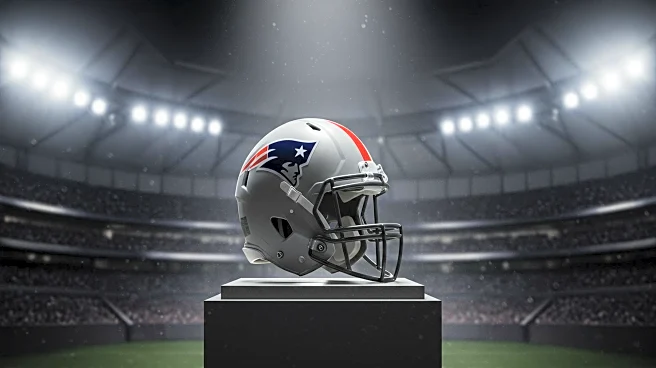What's Happening?
Jones AT&T Stadium, home to the Texas Tech Red Raiders, has been ranked ninth among Big 12 football stadiums based on reviews from Google, Yelp, and Tripadvisor. The stadium received high marks, with a 4.5-star rating on Yelp, 4.4 stars on Tripadvisor, and 4.7 stars on Google. This ranking is part of a broader analysis of Big 12 stadiums, which includes venues like Oklahoma State's Boone Pickens Stadium and Kansas State's Bill Snyder Family Stadium, both of which topped the list with the highest ratings. The rankings reflect consumer satisfaction and are indicative of the stadium's amenities and overall experience for fans.
Why It's Important?
The ranking of Jones AT&T Stadium highlights Texas Tech's competitive position within the Big 12 conference, not only in terms of football performance but also in fan experience. High ratings can enhance the stadium's reputation, potentially attracting more visitors and boosting local economic activity through increased attendance at games and related events. This recognition may also influence recruitment efforts, as prospective athletes often consider the quality of facilities when choosing a college. Furthermore, the rankings provide valuable feedback for stadium management, guiding future improvements and investments.
What's Next?
As the 2025 college football season approaches, Texas Tech may leverage this positive ranking to enhance marketing strategies and fan engagement initiatives. The university could explore further upgrades to Jones AT&T Stadium to maintain or improve its standing in future reviews. Additionally, the rankings might prompt other Big 12 schools to assess their own facilities and consider renovations or enhancements to compete for higher consumer satisfaction ratings.
Beyond the Headlines
The emphasis on stadium rankings underscores the growing importance of fan experience in college sports. As universities invest in their athletic facilities, they must balance tradition with modern amenities to meet evolving consumer expectations. This trend reflects broader shifts in the sports industry, where fan engagement and satisfaction are increasingly critical to financial success and brand loyalty.
















